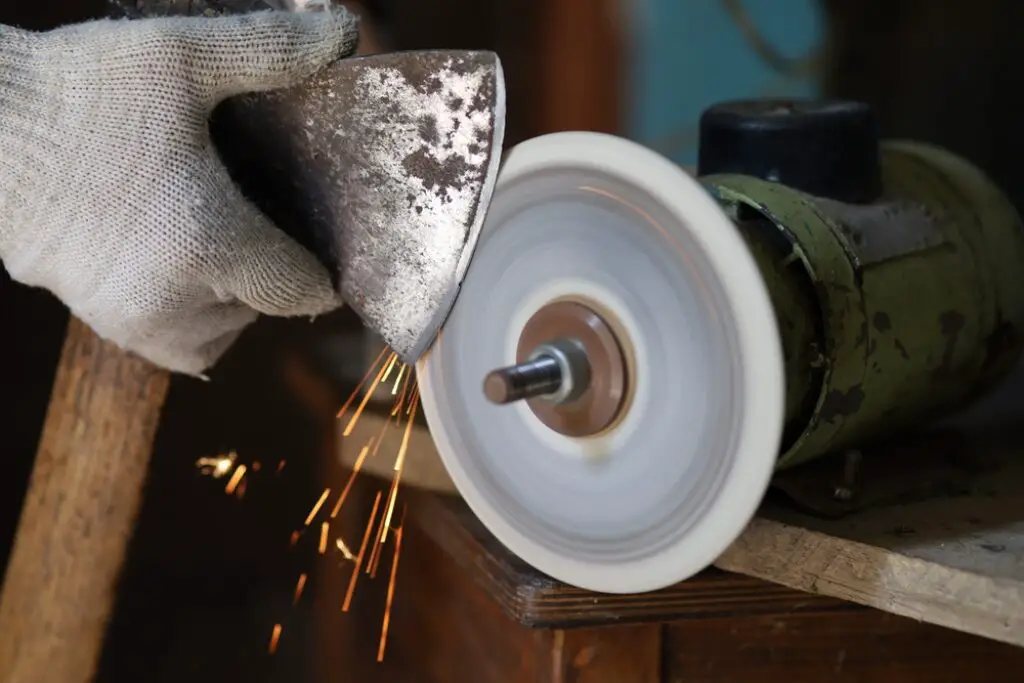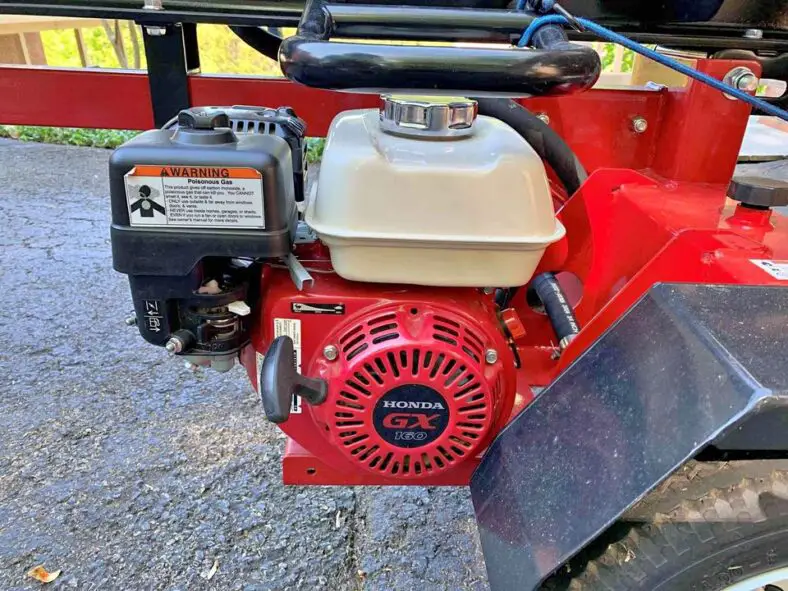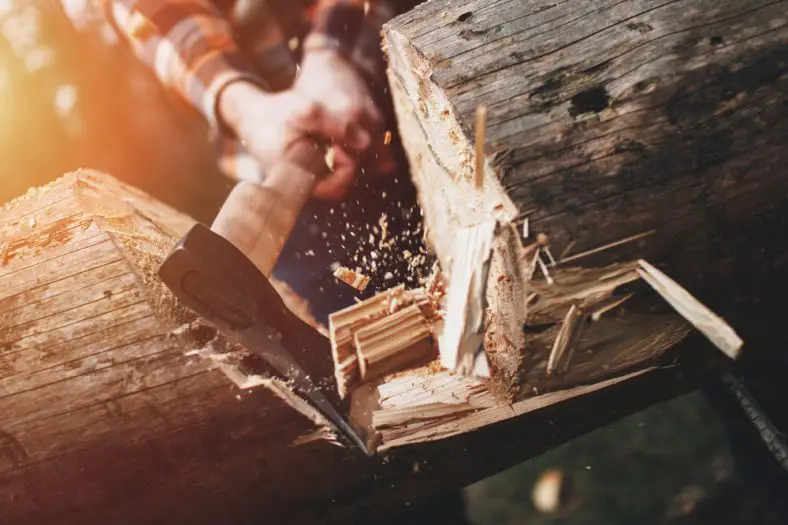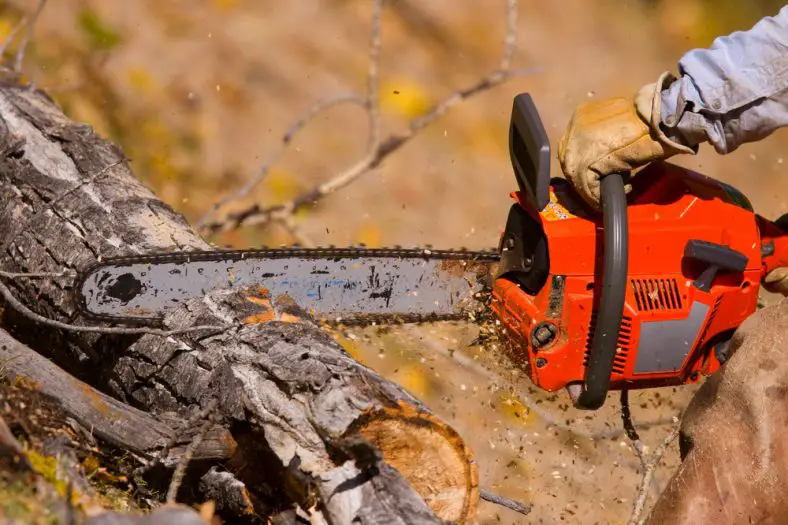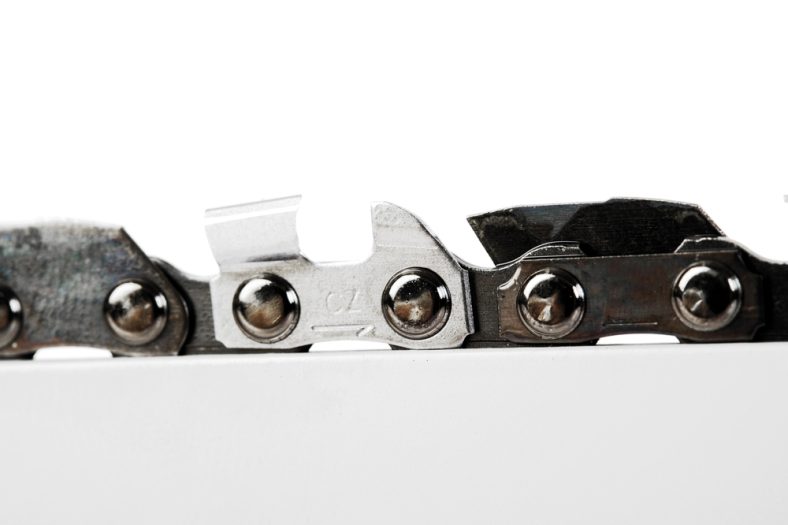Log splitters are essential tools for land owners who need to split firewood quickly and efficiently.
Using an axe or a maul is both slow, and tiresome.
Not all splitters are created equal though – a fast log splitter simplifies the process, making it easy to create a supply of firewood for heating or outdoor usage. Fast log splitters are designed to help land owners get their log splitting done, and free up time for other tasks.
In a Hurry? OUR TOP FAST LOG SPLITTER PICK –

After a thorough analysis and testing of various fast log splitters on the market, our top pick for the fastest log splitter is the “Landworks Log Splitter Portable 20 Ton”. This gas-powered machine showcases an impressive 7.5-second cycle time, allowing it to split logs swiftly and efficiently.
The Landworks Log Splitter’s superior speed is attributed to its powerful 7HP gas engine and a robust 20-ton rated system that works cohesively to ensure an efficient and high-speed performance. Moreover, the 2-Stage Bucher Hydraulic Gear Pump further enhances the speed at which the logs are split.
Despite its high-speed performance, the Landworks Log Splitter does not compromise on other essential aspects. It offers portability with its lightweight design, 10″ sturdy transport wheels, and is easy to set up, enhancing its overall convenience.
Therefore, if speed is your top priority in a log splitter, the Landworks Log Splitter Portable 20 Ton stands out as the fastest option. However, bear in mind that as with any gas-powered machinery, it requires outdoor use and proper ventilation due to its exhaust emissions.
Fast Log Splitter Comparison Table
| Link: | Landworks Log Splitter Portable 20 Ton | Champion Power Equipment 25-Ton Log Splitter | Powerhorse Horizontal/Vertical Log Splitter – 22 Tons | SuperHandy Portable 25 Ton Gas Log Splitter |
| Engine | 7HP gas engine | 224cc single-cylinder OHV engine | 212cc engine | 7HP AlphaWorks engine |
| Splitting Force | 20 ton | 25 ton | 22 ton | 25 ton |
| Cycle Time | 7.5 seconds | 11 seconds | Not mentioned | 12 seconds |
| Weight | 130 lbs | 434 lbs | Not mentioned | 238 lbs |
| Hydraulic Fluid Included? | No | Not mentioned | Not mentioned | No |
This table should provide a quick and clear comparison of each product’s key features. However, it’s important to note that potential buyers should consider their specific needs and circumstances when choosing a log splitter.
For example, while a powerful engine and fast cycle time can speed up the splitting process, aspects like weight and portability might be more important to those who need to move the machine frequently.

There are various types of log splitters available, including:
- manual
- electric
- gas-powered
- hydraulic models
Fast log splitters specifically focus on the speed at which the machine can split logs, often featuring powerful engines or mechanisms that allow for easier splitting. Many users prioritize efficiency and convenience when choosing a log splitter, as these factors can significantly impact the overall experience.
When considering a fast log splitter, it is crucial to pay attention to the
- power source
- splitting force
- cycle time
- and ease of use.
These factors play a significant role in the speed and efficiency of the tool. Additionally, consider the size, weight, and durability of the log splitter, as these elements will affect its portability and longevity. Check out the fast log splitter buyers guide below to find out more about these things.
To guide you in finding the best option, we have thoroughly researched and tested various fast log splitter on the market, focusing on their speed, efficiency, and overall performance. In this article, we present you with our top recommendations to make your log splitting tasks faster, easier, and more enjoyable.
What Type of Log splitters are the fastest?

As I began to compile this list I had my suspicions, but I wasn’t quite sure which type of splitter would actually win the ‘fast log splitter’ race.
I quickly learned, however; that Gas Log Splitters are far and away better than any other type if you’re looking to get the job done in a hurry.
There are a couple of sub-categories within the ‘gas’ type, being the regular hydraulic kind and the Kinetic Flywheel that results in an incredible 2.5 second cycle time with a massive 28-ton capability! However, I am steering clear of the kinetic log splitter kind as they are widely not reviewed well from users.
Our Selection of the Best Fast Log Splitters
We have compiled a list of the best log splitters available on the market to make your firewood preparation quicker and more efficient.
Landworks Log Splitter Portable 20 Ton

We recommend the Landworks Log Splitter for its powerful performance, portability, and ability to handle large logs.
Pros
- Powerful 7HP gas engine with 20-ton rated system
- Portable design with 10″ sturdy transport wheels
- Rapid Auto Return and 7.5-second cycle time for efficient splitting
Cons
- Not suitable for indoor use, must use outside with proper ventilation
- Hydraulic fluid not included, need to purchase separately (AW32 recommended)
- Some users may find it heavy at 130lbs
The Landworks Log Splitter Portable 20 Ton impressed us with its heavy-duty 7HP gas engine and 20-ton rated system, which allowed us to effortlessly split logs up to 20.5″ in length and up to 16″ in diameter. The 2-Stage Bucher Hydraulic Gear Pump provides a smooth performance, making quick work of even the toughest logs.
We appreciated the portable design, featuring a horizontal full beam, steel wedge, and 10″ sturdy transport wheels, which allowed us to easily transport the splitter to different job sites. Setting up the Landworks Log Splitter was fast and hassle-free.
Safety is always a priority, and we were able to operate the log splitter with eye and hand protection while utilizing the controls and shut off/on switch as needed. Note that this log splitter is gas-powered, so it’s more versatile for outdoor applications but should only be used outside with proper ventilation.
In conclusion, the Landworks Log Splitter is an excellent option for those who need a powerful, portable, and efficient log splitter for their outdoor wood splitting tasks. Just keep in mind that it requires outdoor use and must be used with proper safety measures.
Champion Power Equipment 25-Ton Log Splitter

If you’re seeking a powerful and efficient log splitter, you should definitely consider this 25-Ton splitter from Champion Power Equipment.
Pros
- Powerful 224cc single-cylinder OHV engine
- Versatile horizontal and vertical orientation
- Quick 11-second cycle time
Cons
- A bit on the heavier side (434 pounds)
- May struggle with very large logs
- Some users experienced shipping delays
Having recently used the Champion Power Equipment 25-Ton Log Splitter, we found it to be an incredibly powerful and efficient machine. It truly made the tedious task of splitting logs much more manageable. Equipped with a large 224cc single-cylinder OHV engine, this splitter delivers dependable performance and an impressive 25 tons of splitting capacity.
What makes this log splitter stand out is its versatility. With a quick and easy conversion between horizontal and vertical orientations, large and heavy logs can be handled with ease. The 11-second cycle time is a remarkable feature that streamlined our log splitting experience, allowing us to complete the task swiftly and move on to other activities.
While the log splitter might be on the heavy side, weighing in at 434 pounds, it is still easily towable with DOT-approved wheels that can speed up to 45 mph. It fits most ATV/UTV towing applications, making transportation a breeze.
One possible downside we noticed is that, despite its powerful engine, the log splitter may struggle with logs significantly larger than its 24-inch single-log capacity. Furthermore, some users reported delays in shipping which could be a factor to consider when planning one’s purchase.
In summary, the Champion Power Equipment 25-Ton Log Splitter is an impressive machine that offers power, efficiency, and versatility for anyone looking to tackle log splitting tasks with ease. Despite a few minor limitations, we believe this log splitter is a fantastic investment for those in need of a reliable wood-splitting solution.
Powerhorse Horizontal/Vertical Log Splitter – 22 Tons

We highly recommend this Powerhorse Log Splitter for its efficiency, power, and ease of use.
Pros
- Powerful 22-ton splitting force
- Horizontal and vertical splitting options
- Easy-to-start 212cc engine
Cons
- Some assembly required
- Can be difficult to maneuver by hand
- Minor hydraulic fluid leakage reported by some users
We recently had the opportunity to use the Powerhorse Horizontal/Vertical Log Splitter, and we were really impressed with its performance. The 22-ton splitting force made quick work of even the most challenging wood, including large rounds of sycamore and birch. Switching between horizontal and vertical splitting modes was seamless, allowing us to tackle a variety of log sizes and types.
The 212cc engine was a pleasant surprise – it started on the first pull every time, making it incredibly easy to get to work. Despite its power, the log splitter was relatively quiet and offered a smooth operation.
Assembling the Powerhorse Log Splitter took some time, and it was a bit intimidating at first, but following the step-by-step instructions made the process manageable. Once assembled, the splitter performed exceptionally well. However, maneuvering it by hand proved to be a bit challenging, so we recommend hooking it up to a tractor for easier transportation.
We did experience some minor hydraulic fluid leakage, but this did not impact the overall functionality of the log splitter. Just make sure to keep an eye on it and address any leaks promptly to prevent potential damage.
In conclusion, the Powerhorse Horizontal/Vertical Log Splitter is a reliable and efficient log splitter that can tackle a wide variety of wood types. Its powerful engine, versatility, and ease of use make it a great investment for anyone looking to make quick work of splitting logs.
SuperHandy Portable 25 Ton Gas Log Splitter

This log splitter will efficiently and consistently tackle your firewood splitting needs with ease and power.
Pros
- Powerful 7HP AlphaWorks engine and 2-Stage Bucher Hydraulic Gear Pump
- Portable design featuring lightweight half-beam and sturdy steel wedge
- Fast 12-second cycle time and consistent force
Cons
- Hydraulic fluid not included and requires purchase of AW32
- Weight of 238 pounds may still be challenging for some to move
- Limited to 20″ length logs in horizontal mode
We had the opportunity to use the SuperHandy Portable 25 Ton Gas Log Splitter and we found it to be a high-performance and reliable piece of equipment. The 7HP AlphaWorks engine provided smooth and unwavering power output, making short work of our wood pile. The 2-Stage Bucher Hydraulic Gear Pump added to the overall efficiency and power of the splitter.
Portability is a key advantage of this log splitter, as it features a lightweight horizontal half-beam design, a solid steel wedge, and 10″ polyurethane tubeless wheels. Along with the ergonomic folding handle, we had no trouble maneuvering the splitter through various terrains and bringing it to different work sites.
One important thing to note is that the hydraulic fluid is not included in the package, and you’ll need to purchase and use AW32 for optimal operation. Also, the splitter’s weight of 238 pounds may present some difficulties for users who require a lighter option.
In terms of log size capabilities, the splitter can handle logs up to 20″ in length and 16″ in diameter in horizontal mode, and up to 24″ in diameter in vertical mode. This should be sufficient for most firewood splitting needs, but if you’re dealing with larger logs, it may not be the best choice for you.
In conclusion, the SuperHandy Portable 25 Ton Gas Log Splitter is an effective and convenient option for those who require a powerful, portable log splitter for their firewood processing needs. The combination of the powerful engine, hydraulic gear pump, and easy maneuverability make it a great choice for most users.
Splitter Buying Guide
When looking for a fast log splitter, there are several factors to consider to ensure we choose the best product suited for our needs. Here’s a handy buying guide to help us make an informed decision.
Power Source of the Log Splitter
First, consider the power source of the log splitter. There are three main types: manual, electric, and gas. Manual splitters are labor-intensive but do not require electricity or fuel. Electric splitters are efficient and produce less noise compared to gas splitters. However, gas splitters generally provide more power and can handle larger logs. We need to assess our splitting needs and choose accordingly.
Splitting Force
Splitting force is a crucial factor when considering which log splitter to purchase. These specifications refer to the power of the machine and the size of the logs it can handle.
The splitting force of a log splitter is typically measured in tons. This is essentially the amount of force that the machine can exert to split the log. Log splitters on the market usually range from 4 to 25 tons of force.
A 4-ton log splitter is sufficient for small, dry logs or woods that are softer and less dense, such as pine or cedar. These are ideal for residential use, such as for splitting firewood for a small fireplace or wood-burning stove.
On the other end of the spectrum, a 25-ton log splitter can handle much larger, harder, and wet logs. This is the kind of splitter you would need for commercial operations or regular heavy-duty residential use. Hardwoods like oak, hickory, or maple, especially when they’re large or still green (wet), require a lot of force to split.
Understanding the type and size of the logs you’ll be dealing with is crucial in determining the right tonnage. It would be overkill to use a 25-ton log splitter for small, soft logs, while a 4-ton splitter would struggle with large hardwood logs.
Log Splitter Capacity
Capacity, on the other hand, refers to the maximum size of the log that the machine can accommodate. This is usually expressed in terms of the length and diameter of the log. Higher capacity log splitters can handle longer and wider logs.
For instance, some residential-grade log splitters can accommodate logs up to 20 inches long and 12 inches in diameter. Commercial-grade machines can handle logs over 25 inches long and 18 inches in diameter.
Keep in mind that a log splitter with higher splitting force will usually have a larger capacity. However, this isn’t always the case. So, it’s important to check both specifications when purchasing a log splitter.
| Splitting Force | Capacity | Best For | |
|---|---|---|---|
| 4-Ton Log Splitter | 4 tons | Logs up to 12 inches in diameter and 16 inches long | Small, dry logs, softer woods like pine and cedar; Residential use for small fireplace or stove |
| 10-Ton Log Splitter | 10 tons | Logs up to 15 inches in diameter and 20 inches long | Medium-sized logs, mix of soft and hardwoods; Residential or light commercial use |
| 15-Ton Log Splitter | 15 tons | Logs up to 18 inches in diameter and 22 inches long | Larger logs, most hardwoods; Regular residential or commercial use |
| 25-Ton Log Splitter + | 25 tons + | Logs over 18 inches in diameter and 25 inches long | Large, hard, or wet logs, dense hardwoods like oak, hickory, or maple; Heavy-duty or commercial use |
Please note that these values are estimates, actual specifications can vary based on the model and manufacturer. It’s always best to check the product details of the log splitter before purchasing.
To sum up, understanding your own needs is crucial when selecting a log splitter. Assess the type of wood, the size, and the frequency of use before you make a decision. This way, you can ensure that you get a log splitter with the right splitting force and capacity for your needs.
What is Log Splitter Cycle Time?
OK, so cycle time is the measurement you’re after. This metric represents the time it takes for the hydraulic ram to push the log/wood into the splitter and then return to its initial starting position. This time varies between machines and is one of the key questions you should be asking before you make a purchase – particularly if you have a large pile of logs to split in a short amount of time.
Some of the higher-end log splitters sport cycle times as low as 10 seconds, making short work of any pile. Unfortunately, not all log splitters have this metric written down somewhere so you often need to ask the question when you are searching.
We have done a bit of research for you and listed the cycle times of some of the fastest log/wood splitters we could find.
Log Splitter Portability
Portability is another factor to weigh when choosing a log splitter. Some models are designed with wheels and detachable parts, making them easy to transport and store. It’s essential to consider how often we’ll need to move our log splitter and what our storage options are when not in use.
Log Splitter Build Quality
Lastly, it’s crucial to evaluate the build quality and safety features of the log splitter. Some essential safety features include two-handed operation, log cradle, and safety chains. A well-built log splitter with high-quality materials and durability will ensure a long-lasting and safe splitting experience.
In conclusion, by considering the power source, splitting force and capacity, cycle time, portability, and safety features, we can find the ideal log splitter to suit our needs.
Frequently Asked Questions
Fastest log splitter cycle time?
When it comes to the fastest log splitter cycle time, we have seen some models with cycle times as quick as 3-4 seconds. These are typically gas-powered splitters that can handle large volumes of logs efficiently. However, it’s essential to consider your specific needs and preferences when choosing a log splitter, as factors such as power source and portability may also be important.
Best log splitter on market?
There are many excellent log splitters available on the market, making it difficult to pinpoint a single “best” option. Factors such as power source, splitting force, cycle time, portability, and budget all come into play when choosing the ideal log splitter for your needs. We recommend conducting thorough research and considering user reviews before making a purchase.
Capacity of 25-ton splitter?
A 25-ton log splitter has the capacity to handle logs with a diameter of up to 24 inches and a length of up to 26 inches, depending on the specific model. This makes it suitable for homeowners with substantial volumes of logs to split. However, if you’re splitting exceptionally hard or knotty wood, you may want to consider a higher-tonnage model for maximum efficiency.
Manual vs hydraulic splitters?
Manual log splitters rely on human force, usually through a lever system, to split logs. They are generally more affordable, lightweight, and portable compared to hydraulic splitters. However, manual splitters can be slower and more physically demanding to operate. Hydraulic splitters use a hydraulic pump to exert pressure on the log, requiring less physical effort from the operator and offering faster, more efficient performance. Hydraulic splitters are available in both electric and gas-powered models.
What is Eastonmade Ultra?
The Eastonmade Ultra is a line of log splitters designed and manufactured by Eastonmade Wood Splitters. These high-quality machines are built with durability and performance in mind, offering impressive cycle times and splitting forces. The Eastonmade Ultra series includes models with various tonnages, catering to various log splitting needs, from residential to commercial use.
Average wood splitter price?
Log splitter prices can vary greatly depending on factors such as tonnage, power source, and brand. Generally, you can expect to pay anywhere from $100 to $200 for a simple manual splitter, while electric models can range from $300 to $1,000. Gas-powered hydraulic splitters can range from $1,000 to $3,000 or more for heavy-duty, high-tonnage models. Keep in mind that these are average price ranges, and it’s essential to compare specific models based on your unique requirements.
What is the fastest log splitter?
The speed of a log splitter depends on its cycle time, which is the total time it takes for the splitting wedge to extend, split the log, and then retract. The fastest log splitters generally have a cycle time of around 10-15 seconds. Various models from brands such as Champion, Boss Industrial, and Swisher often feature among the fastest in the market. However, the exact model considered as the “fastest” can vary based on the latest releases. Always check the cycle time specified by the manufacturer to determine the speed of a log splitter.
How fast can a log splitter go?
The speed of a log splitter is typically determined by its cycle time, which is how quickly the machine can split a log and reset for the next one. Cycle times can vary widely based on the splitter’s design and power, ranging from around 10 seconds to over a minute. The fastest log splitters on the market typically have cycle times of around 10-15 seconds. Remember that while faster cycle times can increase productivity, they may also require more power and potentially sacrifice some degree of control, which could be a safety concern.
What is the most powerful log splitter?
The power of a log splitter is measured by its splitting force, which is generally expressed in tons. The most powerful log splitters available in the consumer market generally offer around 25-35 tons of force, able to split large, hard, or wet logs. Brands such as NorthStar, Champion, and Boss Industrial often produce high-tonnage log splitters. However, remember that more power isn’t always better – it’s more important to match the power of your log splitter to the size and hardness of the logs you’ll be splitting.
How can I speed up my log splitter?
Increasing the speed of your log splitter largely depends on its design and specifications. However, there are a few general tips to help speed up the process:
Keep the hydraulic fluid clean and topped up. This ensures smooth operation of the hydraulic piston, which controls the splitting wedge.
Sharpen the splitter’s blade or wedge regularly for more efficient splitting.
Position logs correctly and uniformly for a smoother splitting process.
For manual or electric splitters, use an extension cord that is heavy-duty enough to carry the current required by the machine. Underpowered machines tend to run slower.
However, always remember that safety is paramount when operating log splitters. Trying to excessively speed up the process could lead to accidents.


